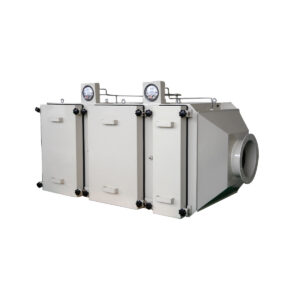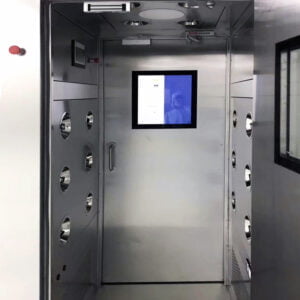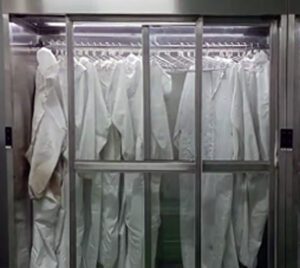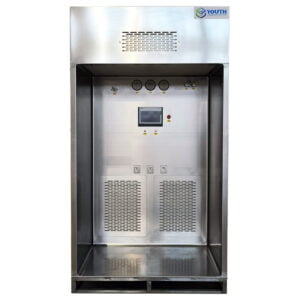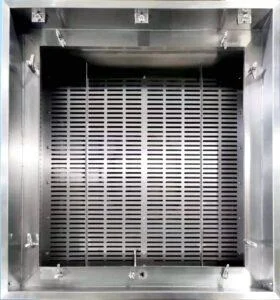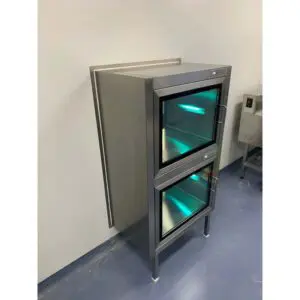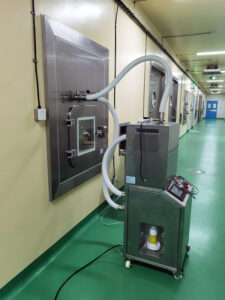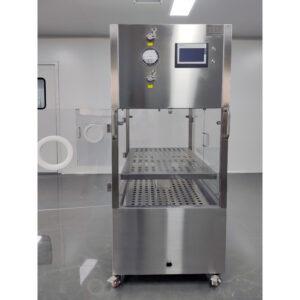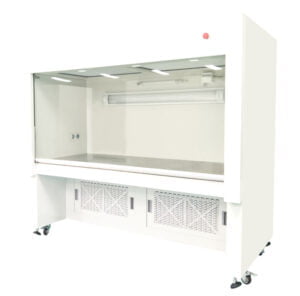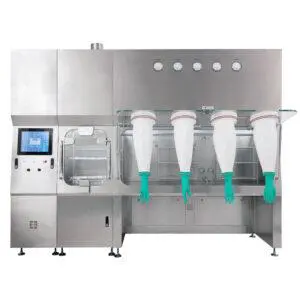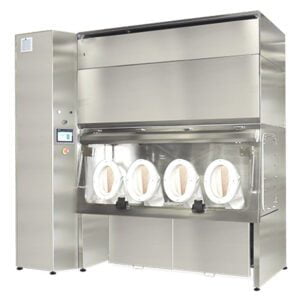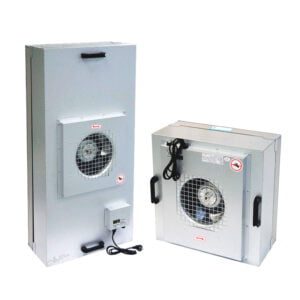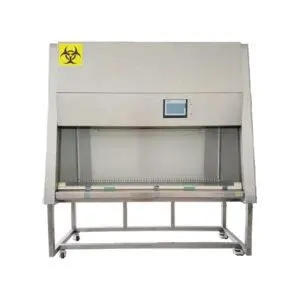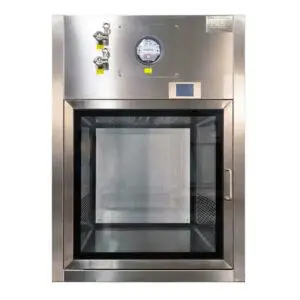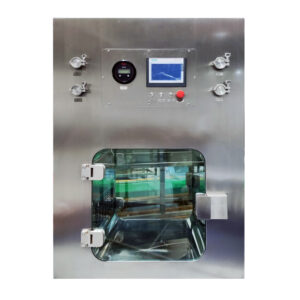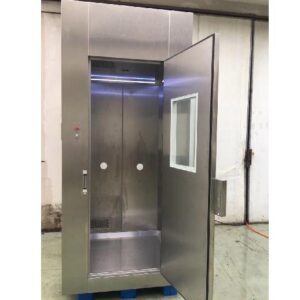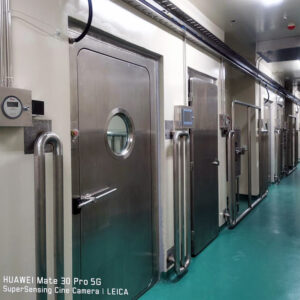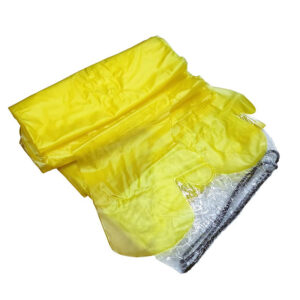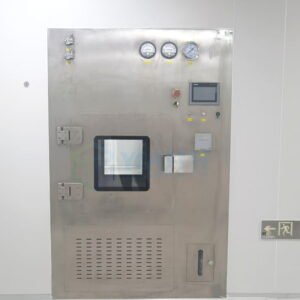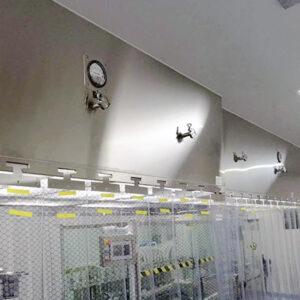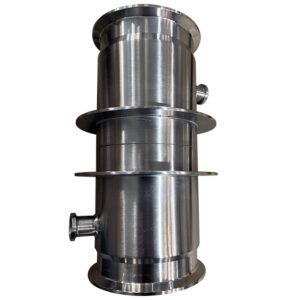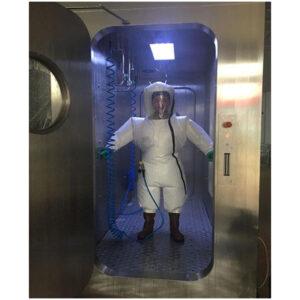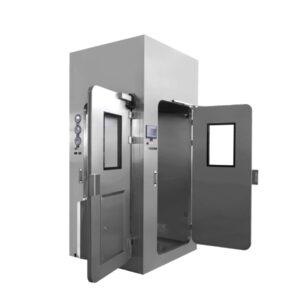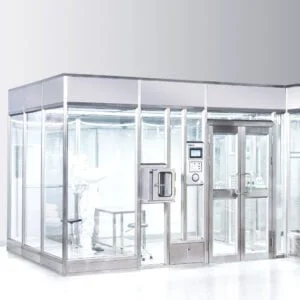Mobile laminar air flow units have become an indispensable tool in modern laboratories, offering a portable solution for maintaining sterile environments. These versatile devices provide a controlled, particle-free airflow that is crucial for protecting sensitive samples and ensuring the integrity of experiments. As the demand for flexible and efficient laboratory equipment continues to grow, understanding the pros and cons of mobile laminar air flow units is essential for researchers and lab managers alike.
In this comprehensive article, we'll explore the key features, applications, and considerations of mobile laminar air flow units for labs. We'll delve into their benefits, such as enhanced contamination control and improved workflow efficiency, as well as potential drawbacks like energy consumption and maintenance requirements. By examining these aspects in detail, we aim to provide a thorough understanding of how these units can be integrated into various laboratory settings to optimize research outcomes and maintain stringent cleanliness standards.
As we navigate through the intricacies of mobile laminar air flow technology, we'll uncover the latest innovations in the field and discuss how these advancements are shaping the future of laboratory practices. From compact designs that fit seamlessly into existing workspaces to advanced filtration systems that exceed industry standards, the evolution of mobile laminar air flow units continues to push the boundaries of what's possible in controlled environment research.
Mobile laminar air flow units for labs are essential tools that provide a controlled, particle-free environment for sensitive procedures, offering flexibility and efficiency in maintaining sterile conditions across various laboratory applications.
What are the key components of mobile laminar air flow units?
At the heart of every mobile laminar air flow unit lies a sophisticated system designed to create and maintain a sterile work environment. These units are engineered with precision to ensure the highest levels of cleanliness and contamination control.
The primary components of mobile laminar air flow units include HEPA filters, blower systems, and a carefully designed housing that facilitates laminar airflow. These elements work in concert to create a unidirectional stream of filtered air, effectively sweeping away particulates and maintaining a clean workspace.
Delving deeper into the construction of these units, we find that the quality of the HEPA filters is paramount. These filters are capable of removing 99.97% of particles 0.3 microns or larger, ensuring that the air within the work area is virtually free of contaminants. The blower system, typically equipped with variable speed controls, allows for precise adjustment of airflow to meet specific experimental requirements.
YOUTH's mobile laminar air flow units incorporate state-of-the-art HEPA filtration technology, ensuring a sterile environment that meets or exceeds ISO 5 clean room standards, crucial for maintaining the integrity of sensitive laboratory procedures.
| Component | Function | Efficiency |
|---|---|---|
| HEPA Filter | Particle removal | 99.97% at 0.3 microns |
| Blower System | Air circulation | Variable speed control |
| Housing | Directs airflow | Laminar flow pattern |
In conclusion, the key components of mobile laminar air flow units are meticulously designed to work in harmony, providing researchers with a reliable and efficient means of maintaining a sterile workspace. The integration of high-performance filters, adjustable blower systems, and ergonomic housing ensures that these units can adapt to various laboratory needs while consistently delivering superior air quality.
How do mobile laminar air flow units enhance laboratory workflow?
Mobile laminar air flow units have revolutionized laboratory workflows by introducing a level of flexibility and efficiency previously unattainable with fixed clean room installations. These portable units allow researchers to create sterile work environments on demand, adapting to the dynamic needs of modern laboratories.
By providing a localized area of clean air, mobile laminar flow units enable scientists to perform sensitive procedures without the need for a dedicated clean room. This versatility is particularly valuable in multi-purpose labs where space is at a premium and different projects may require varying levels of air cleanliness.
The mobility of these units also facilitates collaboration and shared resources among different research teams. Laboratories can easily move the units between workstations or even between different facilities, ensuring that sterile conditions are maintained wherever they are needed most. This adaptability not only improves resource allocation but also promotes a more efficient use of laboratory space and equipment.
Mobile laminar air flow units from YOUTH significantly enhance laboratory workflow by providing portable, ISO 5 classified clean air environments that can be strategically positioned to support various research activities, improving both efficiency and experimental outcomes.
| Workflow Aspect | Improvement | Impact |
|---|---|---|
| Flexibility | On-demand sterile workspace | Adaptable to changing research needs |
| Space Utilization | Localized clean air zones | Efficient use of laboratory space |
| Collaboration | Portable between teams | Enhanced resource sharing |
In conclusion, the integration of mobile laminar air flow units into laboratory workflows offers a multitude of benefits. From creating adaptable sterile workspaces to facilitating collaboration and efficient resource utilization, these units have become indispensable tools in modern research environments. As laboratories continue to evolve, the flexibility and performance of mobile laminar flow technology will undoubtedly play a crucial role in shaping the future of scientific research and development.
What are the energy considerations for mobile laminar air flow units?
Energy efficiency is a critical consideration in the design and operation of mobile laminar air flow units. As laboratories strive to reduce their environmental impact and operational costs, understanding the energy requirements of these essential pieces of equipment becomes increasingly important.
Mobile laminar air flow units typically consume more energy than traditional laboratory equipment due to their continuous operation and high-performance filtration systems. The energy demand is primarily driven by the blower motor, which must maintain constant airflow to ensure the integrity of the sterile environment.
However, advancements in technology have led to significant improvements in energy efficiency. Modern units often incorporate energy-saving features such as ECM (Electronically Commutated Motor) technology, which can reduce power consumption by up to 30% compared to traditional motors. Additionally, smart control systems allow for precise airflow management, optimizing energy use based on actual demand.
Mobile laminar air flow units for labs, such as those offered by YOUTH, are designed with energy efficiency in mind, incorporating advanced motor technologies and intelligent control systems to minimize power consumption without compromising performance.
| Feature | Energy Saving | Benefit |
|---|---|---|
| ECM Technology | Up to 30% reduction | Lower operational costs |
| Smart Controls | Demand-based operation | Optimized energy use |
| LED Lighting | 50-70% less energy than fluorescent | Reduced heat generation |
In conclusion, while mobile laminar air flow units do require significant energy input to maintain sterile conditions, the latest models are designed with energy efficiency as a key consideration. By implementing advanced technologies and intelligent control systems, manufacturers are able to offer units that balance the need for high-performance air filtration with responsible energy consumption. As energy efficiency continues to be a focus in laboratory design, we can expect further innovations that will reduce the environmental impact of these essential tools.
How do mobile laminar air flow units compare to fixed clean room installations?
When considering the implementation of sterile work environments in laboratories, the choice between mobile laminar air flow units and fixed clean room installations is a critical decision. Each option offers distinct advantages and challenges that must be carefully weighed against the specific needs of the research facility.
Mobile laminar air flow units provide unparalleled flexibility, allowing laboratories to create sterile workspaces wherever and whenever they are needed. This adaptability is particularly valuable in multi-purpose research environments where space is limited, or when sterile conditions are only required intermittently.
Fixed clean room installations, on the other hand, offer a more comprehensive solution for maintaining a controlled environment across a larger area. They provide consistent air quality throughout the entire space and can accommodate multiple workstations simultaneously. However, they require significant upfront investment and permanent allocation of laboratory space.
Mobile laminar air flow units for labs offer a cost-effective and flexible alternative to fixed clean room installations, providing ISO 5 classified environments that can be easily relocated to meet changing research needs without the substantial infrastructure requirements of permanent installations.
| Aspect | Mobile LAF Units | Fixed Clean Rooms |
|---|---|---|
| Initial Cost | Lower | Higher |
| Flexibility | High | Low |
| Space Requirements | Minimal | Substantial |
| Scalability | Easily scalable | Limited by infrastructure |
In conclusion, the choice between mobile laminar air flow units and fixed clean room installations depends on various factors, including budget constraints, space availability, and the specific requirements of research projects. Mobile units offer a versatile and cost-effective solution for laboratories that require adaptable sterile workspaces, while fixed installations provide a more comprehensive environment for facilities with consistent high-volume needs. As laboratory practices continue to evolve, the flexibility and efficiency of mobile laminar air flow units make them an increasingly attractive option for many research institutions.
What maintenance requirements should be considered for mobile laminar air flow units?
Maintaining mobile laminar air flow units is crucial for ensuring their continued performance and longevity. Proper maintenance not only preserves the sterile environment necessary for sensitive laboratory procedures but also protects the substantial investment made in this essential equipment.
Regular maintenance tasks typically include filter inspections, airflow velocity checks, and cleaning of external surfaces. The frequency of these tasks can vary depending on usage and environmental factors, but a general guideline is to perform basic checks weekly and more comprehensive inspections monthly.
One of the most critical maintenance aspects is the replacement of HEPA filters. These filters are the heart of the laminar flow system and must be changed periodically to maintain optimal performance. The lifespan of HEPA filters can range from 3 to 5 years, depending on usage and environmental conditions, but regular monitoring is essential to determine the exact replacement schedule.
Regular maintenance of Mobile laminar air flow units for labs is essential for maintaining their efficiency and extending their operational life. YOUTH's units are designed with user-friendly maintenance features, simplifying the process of filter replacement and routine cleaning to ensure consistent performance.
| Maintenance Task | Frequency | Importance |
|---|---|---|
| Filter Inspection | Weekly | Critical |
| Airflow Check | Monthly | High |
| Surface Cleaning | Daily/Weekly | Moderate |
| HEPA Replacement | 3-5 Years | Essential |
In conclusion, while mobile laminar air flow units require regular maintenance to ensure optimal performance, the tasks involved are generally straightforward and can often be performed by laboratory staff with proper training. By adhering to a consistent maintenance schedule and promptly addressing any issues that arise, laboratories can ensure that their mobile laminar air flow units continue to provide the sterile environments necessary for cutting-edge research and development.
How do mobile laminar air flow units contribute to contamination control?
Contamination control is paramount in laboratory settings, and mobile laminar air flow units play a crucial role in maintaining sterile conditions for sensitive procedures. These units are designed to create a controlled environment that minimizes the risk of airborne contaminants interfering with experiments or compromising sample integrity.
The primary mechanism by which mobile laminar air flow units contribute to contamination control is through the creation of a unidirectional airflow. This laminar flow pattern sweeps particles away from the work area, effectively preventing contaminants from settling on surfaces or samples within the protected space.
Advanced filtration systems, typically incorporating HEPA or ULPA filters, remove an impressive 99.97% to 99.9995% of particles 0.3 microns and larger from the air. This level of filtration ensures that the air within the work area is virtually free of particulates, microorganisms, and other potential contaminants.
Mobile laminar air flow units are essential tools for contamination control in laboratory settings, providing a localized ISO 5 classified environment that significantly reduces the risk of airborne contamination during sensitive procedures and sample handling.
| Feature | Contamination Control Benefit | Efficiency |
|---|---|---|
| Laminar Airflow | Sweeps away particles | Continuous protection |
| HEPA Filtration | Removes 99.97% of particles | ≥0.3 microns |
| ULPA Filtration | Removes 99.9995% of particles | ≥0.12 microns |
In conclusion, mobile laminar air flow units are indispensable for maintaining contamination control in laboratory environments. By providing a controlled, particle-free workspace, these units enable researchers to conduct sensitive experiments with confidence, knowing that their samples and processes are protected from airborne contaminants. As research demands continue to evolve, the role of mobile laminar air flow technology in ensuring the integrity of scientific work will undoubtedly remain crucial.
What are the latest innovations in mobile laminar air flow technology?
The field of mobile laminar air flow technology is continuously evolving, with manufacturers introducing innovative features to enhance performance, usability, and efficiency. These advancements are reshaping the capabilities of mobile units, making them more adaptable and powerful tools for laboratory research.
One of the most significant recent innovations is the integration of smart control systems. These intelligent interfaces allow for precise adjustment of airflow parameters, monitoring of filter life, and even remote operation through mobile devices. Such systems not only improve the ease of use but also contribute to energy efficiency by optimizing performance based on actual usage patterns.
Another area of innovation is in filter technology. The development of advanced HEPA and ULPA filters with enhanced particle capture efficiency and longer lifespans is improving the overall performance and cost-effectiveness of mobile laminar air flow units. Some manufacturers are also exploring the use of nanotechnology in filter design to further improve filtration capabilities.
The latest mobile laminar air flow units for labs incorporate cutting-edge technologies such as IoT connectivity and advanced sensor systems, allowing for real-time monitoring and adjustment of airflow parameters to maintain optimal sterile conditions in dynamic laboratory environments.
| Innovation | Benefit | Impact on Performance |
|---|---|---|
| Smart Controls | Enhanced user interface | Improved efficiency and monitoring |
| Advanced Filters | Higher filtration efficiency | Extended filter life and better air quality |
| IoT Integration | Remote monitoring and control | Real-time performance optimization |
In conclusion, the latest innovations in mobile laminar air flow technology are focused on enhancing performance, usability, and efficiency. From smart control systems to advanced filtration technologies, these developments are making mobile units more capable and reliable than ever before. As research demands continue to evolve, we can expect further innovations that will push the boundaries of what's possible in portable clean air technology for laboratories.
Conclusion
Mobile laminar air flow units have become indispensable tools in modern laboratory settings, offering a perfect balance of flexibility, efficiency, and contamination control. As we've explored throughout this article, these portable units provide numerous advantages over fixed clean room installations, including adaptability to changing research needs, cost-effectiveness, and the ability to create localized sterile environments on demand.
The key components of mobile laminar air flow units, including high-efficiency HEPA filters and precision-engineered blower systems, work in harmony to maintain ISO 5 classified environments crucial for sensitive laboratory procedures. While energy considerations are important, advancements in motor technology and smart control systems have significantly improved the efficiency of these units, reducing operational costs and environmental impact.
Maintenance requirements, though essential, are generally straightforward and can be integrated into regular laboratory routines. The contribution of mobile laminar air flow units to contamination control cannot be overstated, as they provide a reliable barrier against airborne particles and microorganisms that could compromise research integrity.
As we look to the future, ongoing innovations in mobile laminar air flow technology promise even greater performance and usability. From IoT integration to advanced filtration systems, these developments will continue to enhance the capabilities of mobile units, further cementing their role in cutting-edge research and development.
In conclusion, mobile laminar air flow units represent a critical investment for laboratories seeking to maintain the highest standards of cleanliness and experimental control. Their ability to create flexible, sterile workspaces makes them an essential tool for researchers across various scientific disciplines. As laboratory practices continue to evolve, the adaptability and efficiency of mobile laminar air flow units will undoubtedly play a crucial role in shaping the future of scientific discovery and innovation.
External Resources
Laminar Flow Units – KIRHTECH – This page describes laminar air flow units designed to minimize contamination in cleanrooms and other controlled environments. It highlights features such as HEPA filters, mobility, and the ability to create ISO 5 classified areas.
Laminar Airflow Units | LAF Units – Germfree – Germfree's Laminar Airflow Units are designed for safe handling of non-hazardous materials in sterile environments. The page details their use in healthcare, biopharma, and their configurable nature for various applications.
Mobile Laminar Air Flow (MLAF) – Brinda Pharma Technologies – Brinda Pharma's Mobile Laminar Air Flow trolleys are used for storing and transferring products sensitive to contamination. The page provides details on the construction, dimensions, and customization options.
Operio portable laminar air flow – Normeditec – The Operio Mobile Laminar Air Flow system is designed for operating room ventilation, providing focused and direct sterile horizontal airflow. It highlights the system's ability to reduce surgical site infections and its compliance with international medical standards.
Mobile laminar flow solutions – Medical Air Technology – This page discusses mobile laminar flow solutions, particularly the Toul Meditech range, which deliver ultraclean air directly over surgical instruments or wound sites. It emphasizes the SteriStay instrument table and its benefits in maintaining sterile conditions.
Related Contents:
- Mobile LAF Cart HEPA Filtration: Efficiency Guide
- Energy-Saving Laminar Air Flow Units 2025
- Laminar Flow Hood Airflow: Understanding Dynamics
- Airflow Control in Mobile LAF Carts: Expert Guide
- Laminar Air Flow Unit HEPA Filter Guide 2025
- HEPA Filter Efficiency: Maximizing Air Purification
- ULPA vs HEPA Filters for Laminar Flow Units
- HEPA Filters in Biosafety Cabinets: A Deep Dive
- Vertical vs Horizontal Laminar Flow Units 2025

